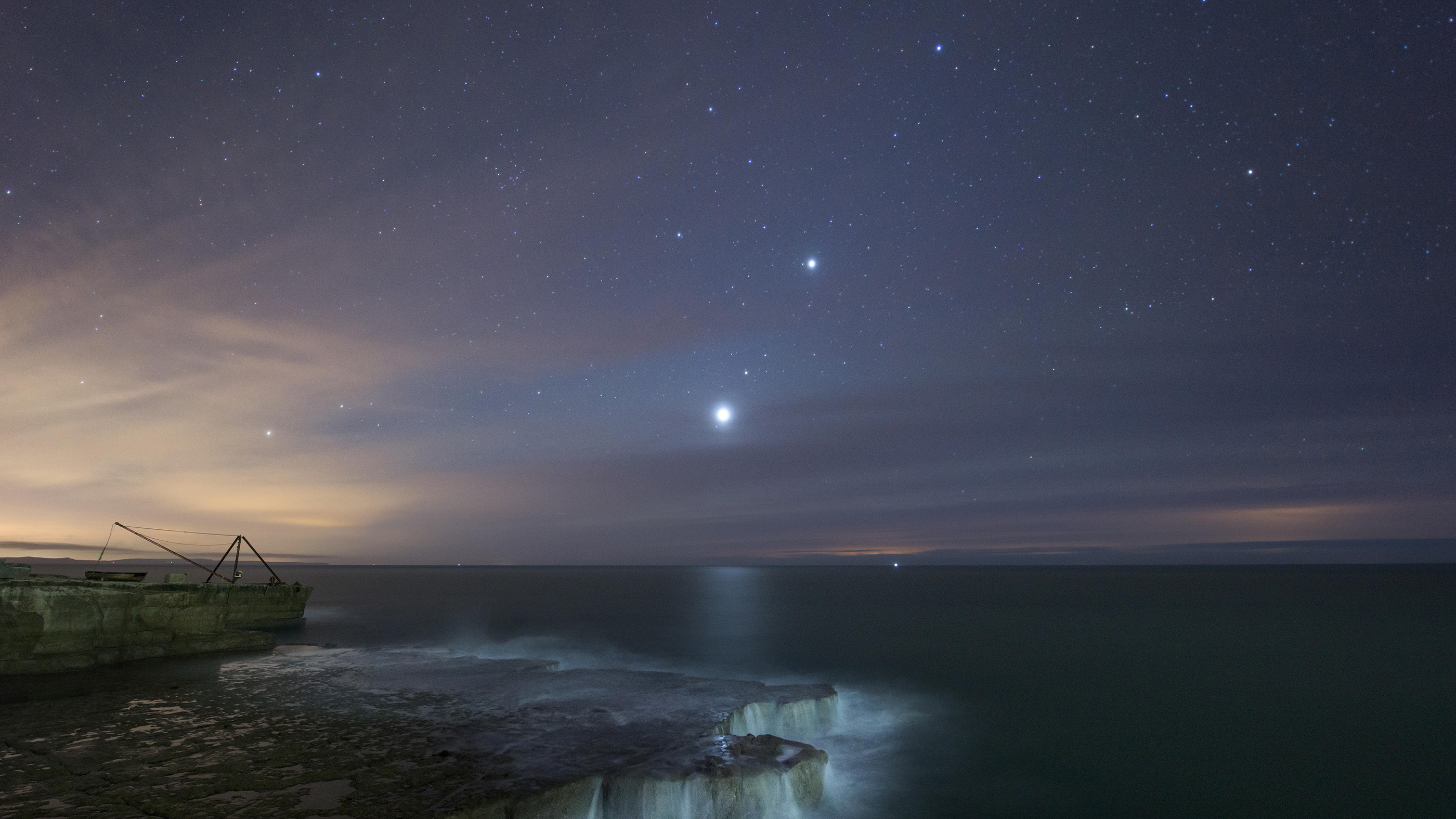This is the best time to spot a rare alignment of five planets. Here's how to watch it.
Mercury, Venus, Mars, Jupiter and Saturn are on dazzling predawn display.

The early bird catches the spectacular skywatching this week, as five planets march across the predawn sky.
This rare planetary alignment has been visible since early June. But the view should be particularly impressive this week, as Mercury is at its brightest and the waning moon joins the parade of planets.
"This is early morning, so you do have to set the alarm in order to do it — but it's just a fun time to go see planets in the sky," Michelle Nichols, director of public observing at Chicago's Adler Planetarium, told Live Science.
Related: 4 planets line up like ducks in a row in gorgeous night-sky image
How to watch the five-planet alignment
The alignment is visible just before dawn in the Northern Hemisphere. The best time to look is about 45 minutes before sunrise, local time, Nichols said.
The planets will be spread from the east-northeast horizon, arcing toward the south. Coincidentally, they'll be lined up in their order from the sun: Mercury, Venus, Mars, Jupiter and Saturn. This particular planetary configuration hasn’t occurred since 1864, Live Science sister site Space.com reported. Saturn is the earliest of this quintuplet to rise and will be visible in the southeast sky just before dawn, in the constellation Capricornus. Jupiter, in the constellation Pisces, will be visible as a very bright body next door; it will appear more than twice as bright as Sirius, the brightest star in the sky, according to Space.com.
Mars is one of the easier planets to pick out because of its reddish coloring; it will be above the eastern horizon. Venus, appearing even brighter than Jupiter, will rise over the horizon, to the left of Mars. Mercury will be the last to make an appearance in the 40 minutes or so before sunrise, peeking over the horizon to the left of Venus.
Sign up for the Live Science daily newsletter now
Get the world’s most fascinating discoveries delivered straight to your inbox.
On June 27, the crescent moon will provide a useful signpost for Mercury, which will be just below and to the right of the crescent. Mercury will also hover near an orange-tinted star called Aldebaran, which makes up the eye of the bull in the constellation Taurus.
A helpful tip for picking out planets is to look for steady light, Nichols said. Stars twinkle, but planets don't.
Adding to the drama, the moon will be swooping across this band of planets throughout the week. On Wednesday (June 22), the moon will be to the right of Mars. From June 23 to 25, it will perch between Mars and Venus, becoming a skinnier crescent each night. Break out the binoculars before dawn on June 27, according to Space.com, and you might catch the last 3% sliver of the moon sitting to the left of a relatively bright Mercury.
What is a planetary alignment?
The visible planets are not actually lined up in space, but they do all happen to be on one side of the sun. From Earth, a lack of depth perception makes the planets look like they are next to one another.
Mercury circles the sun every 88 Earth days, Venus every 225 days, Mars every 687 days, Jupiter every 12 years and Saturn every 29 years, so these alignments occur on an irregular schedule. The last time the five visible planets were aligned was in 2020, preceded by 2016 and 2005.
The alignment will be visible even in the presence of light pollution, but some of the planets — especially Mercury — are low to the horizon, so look for a viewpoint with a clear southern and eastern horizon, such as a shoreline or another flat spot.
Originally published on Live Science

Stephanie Pappas is a contributing writer for Live Science, covering topics ranging from geoscience to archaeology to the human brain and behavior. She was previously a senior writer for Live Science but is now a freelancer based in Denver, Colorado, and regularly contributes to Scientific American and The Monitor, the monthly magazine of the American Psychological Association. Stephanie received a bachelor's degree in psychology from the University of South Carolina and a graduate certificate in science communication from the University of California, Santa Cruz.









